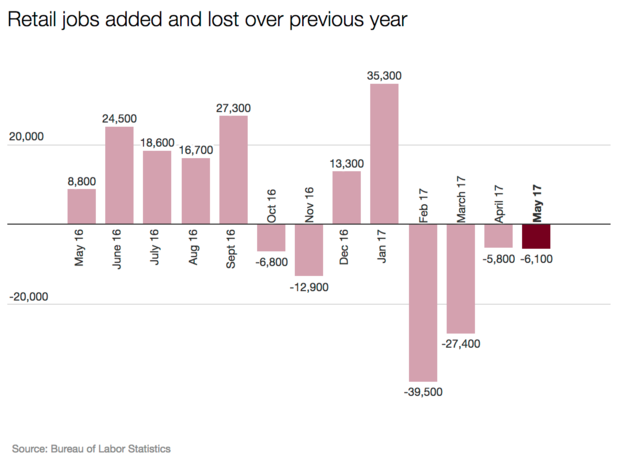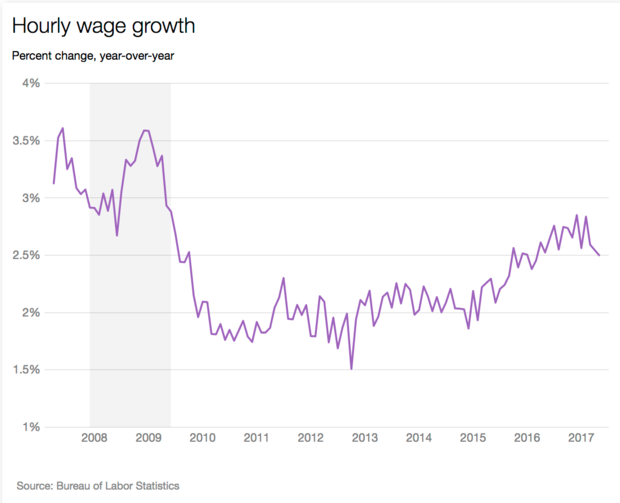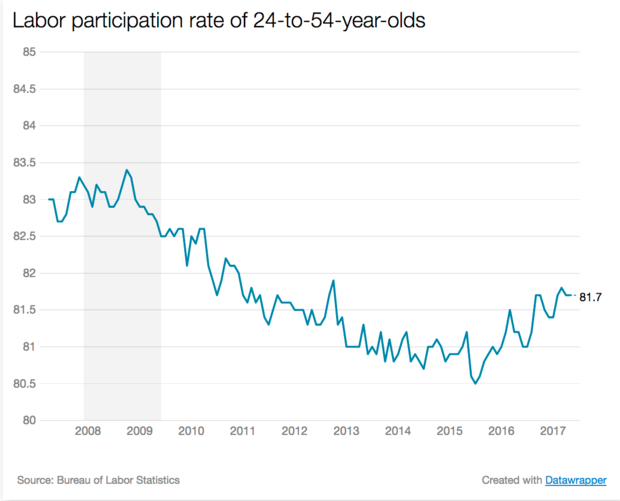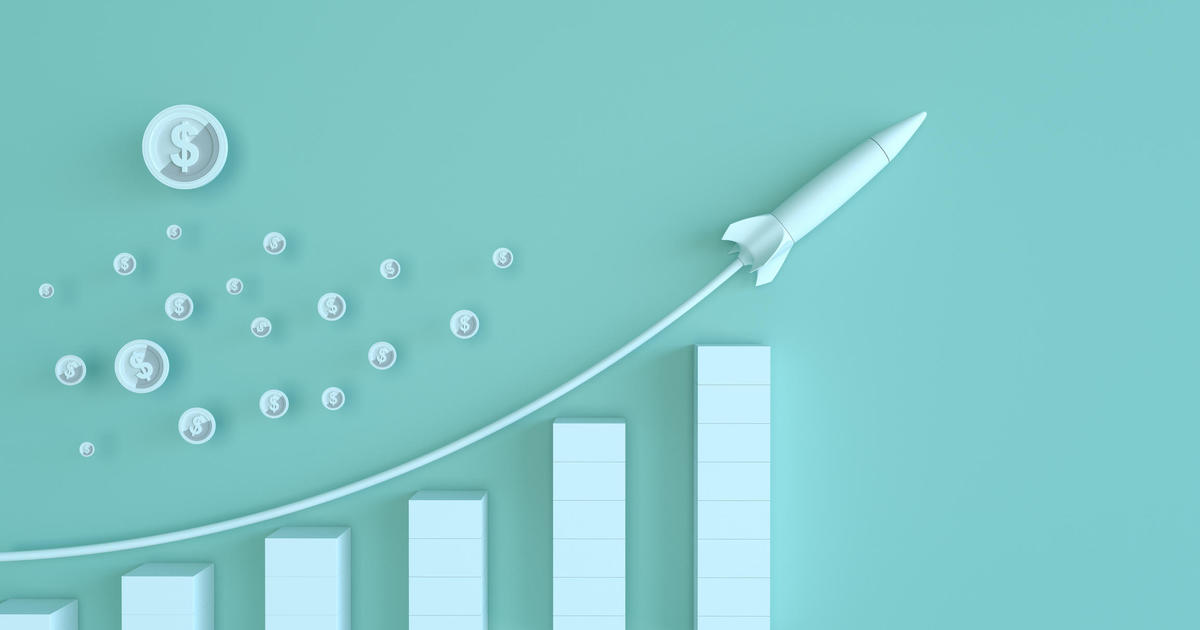U.S. jobless rate falls to lowest level in 16 years
The. U.S. unemployment rate is at its lowest level in 16 years, falling to 4.3 percent even as job growth slowed in May.
Employers added a weaker-than-expected 138,000 jobs in May, undershooting forecasts of around 180,000. Job gains for March and April were also revised down, showing 66,000 fewer jobs were added than first estimated.
The Labor Department's monthly employment report is closely watched as a a gauge of the economy and, of late, for hints on whether the Federal Reserve is likely to hike interest rates.
The low unemployment rate demonstrates that the labor market is tight. Pantheon Macroeconomics' chief economist, Ian Shepherdson, observed that "employers are still able to find the people they want, though surveys and anecdotal evidence strongly suggest that it is becoming harder to find qualified staff."
But below the surface, the figures show an economy moving at different speeds for different people. Here are the main takeaways from May's report.
Retail woes
May marks the fourth straight month that the retail sector has shed jobs, highlighting the ongoing financial struggles of many brick-and-mortar stores amid the growth in ecommerce.
Nearly 80,000 retail jobs have been lost since February, according to the latest figures, and a dozen chains have announced closing or bankruptcy, including Rue21, BCBGMaxAzria, Payless, Wet Seal and H.H.Gregg. And the future isn't looking good: An analysis from the Los Angeles Times this week found that up to a quarter of U.S. malls could close.
Some observers say the weakness is specific to a small subset of stores, like department stores and the apparel sector, and has been balanced out by more specialized or higher-end retailers.
"The retail locations doing well are more boutique, experience-oriented retail that provide more of a rich, contextual shopping experience," Andrew Chamberlain, chief economist at Glassdoor, told CBS News. "Although there's weakness in those big box stores, there's still a lot of demand," he said.
Slow wage growth
Wages in May increased 2.5 percent from the year before, in line with the moderate growth they've shown in recent months. That figure is well below the 3 or 4 percent growth typical of earlier economic recoveries and throws into question the understood relationship between unemployment and pay (as one drops, the other typically rises).
Many economists believe that wage growth is right around the corner. As the employment rate keeps dropping, average wage growth will accelerate, the thinking goes -- a phenomenon known as "nonlinear acceleration."
"A lot of economists believe that once we eventually get a good one-half or 1 percent below full employment, wages will start to accelerate very quickly," Steve Rick, chief economist at CUNA Mutual Group, told CBS News ahead of the latest jobs report. This is already happening in some geographic pockets, he noted.
"Some states are already at 3.5 or 3.8 percent [unemployment]. In those states we're seeing a nonlinear acceleration in wages, especially in the construction fields," he said. "Once you get to the point where you can't find workers, firms will start pushing and raising wages."
No participation awards
The perennially low participation rate, which measures the portion of the population either working or looking for a job, remains a weak point of the economy. In fact, people leaving the labor force was one of the factors that, in May, pushed the unemployment rate down to a historic low.
"[T]he slight drop in the unemployment rate is due to would-be workers leaving the labor force, not getting jobs," Elise Gould, senior economist at the Economic Policy Institute, wrote on Friday.
Still, there is one element that is encouraging: the share of people aged 24 to 54 who are either working or looking for work stayed steady from the prior month. That number has been rising slowly over the past two years, an indication that more people in their prime working are optimistic enough to participate in the labor force.
The figure, which is often seen as a gauge of economic health, is particularly important in the current recovery because the high rate of retiring baby boomers is pulling the overall participation rate down to a level last seen in the late 1970s.
-- Larry Light contributed reporting.







